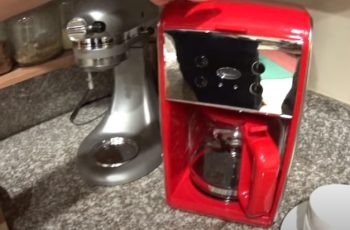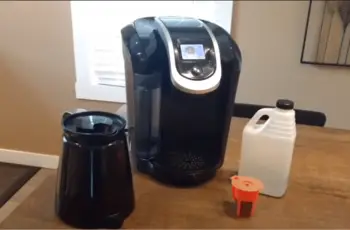Brewing espresso through pour-over techniques is considered one of the subtler methods of extraction. With pour-overs, you have the flexibility to brew directly into a single cup or a larger carafe, producing a rich and robust cup of coffee. What exactly is a pour-over coffee maker?
The goal is to provide fresh and rich flavour notes that a regular coffee machine could miss out on. To deliver great coffee to their clients, most coffee shops follow this practise.
Pour over coffee isn’t just for coffee establishments. You can enjoy handcrafted coffee in the comfort of your own home while also saving money.
The Pour Over’s History
How about we investigate how the pour over turned into the top preparing strategy in the espresso business.
The pour over has been around for quite a long time in third wave cafés and homes of espresso aficionados. The beginning of the pour over is a lost custom inside the espresso culture. Everything began by a lady named Amalie Auguste Melitta Bentz.
One evening in 1908, Melitta was unsatisfied with the repulsive taste from her percolator. The espresso was over separated and severe. Melitta started trying different things with various approaches to blend.
Melitta started with some smearing paper from her child’s textbook and a metal pot penetrated with a nail. Satisfied with the result, Melitta delivered this new pour over brewer to general society.
Her Melitta Pour Overs took off during the 1930s. The cone formed plan that we are recognizable today, hit the racks by 1950s. These turned into an enormous hit because of the better extraction the cone offered by a bigger region for filtration.
Melitta is a known brand in the espresso business today for their pour over hardware and channels. Melitta’s impact went global, and changed how we characterize quality espresso. One that fosters another, yet straightforward, inventive approach to mix espresso.
How does it Operates or Function
Medium-rough soil is placed in a filter-shaped cone. Batches of hot water are added to the coffee grounds, the first to “sprout” the grounds and the second to thoroughly brew them. The water passes through the grounds and into a single cup or carafe, producing a rich, full-bodied cup of coffee.
The manual and automated worlds of pour over coffee are straddled by the pour over coffee maker. It contains a built-in flexible kettle and an auto measuring scale to calculate the proper amount of caffeine to water, but you must pour the hot water manually. The filtration of the cone style allows an even water flow, as it knows you are not so patient.
Benefits of Pour-Over Coffee Maker
Benefits of Pour over coffee maker are listed below:
1. Water Temperature
The water temperature is uncontrollable for pour over brewers. That is all up to you. With pour over brewing, you never have to worry about the water temperature because it’s so simple to place a kettle on the burner until it boils.
2. Control Over Pouring
Pour over brewers allow you complete control over the water pouring. You don’t have to rely on a machine’s spout; you can pour it exactly how you want it and make changes if necessary. If you’re holding the kettle, there’s nothing keeping you from pouring water evenly.
3. Designations
Pour over brewers are designed to be one-time purchases. If you look after it, it can last a lifetime or perhaps two. That is, if you don’t smash it against a brick wall or run it over with your coffee.
4. Thermostatic Control
The machine uses a holding tank or warmer pre-stacked up with water. At the point when the machine is turned on, the aggregate of the water in the holding tank is brought to approach edge of bubbling over around using a thermostatically controlled warming segment.
Uses of Pour-Over Coffee Maker
Right when water is filled a top mounted plate, it’s everything except a channel and chamber which passes on the infection water to the lower part of the evaporator.
The less-thick high temp water in the evaporator is removed out of the tank and into a chamber inciting the sprinkle head, where it’s everything except a mix compartment containing the ground coffee.
The pour-over, water migration strategy for espresso causing will overall to convey mixed coffee at significantly speedier rate than standard spill plans.
It is the fundamental deterrent is extended force usage to preheat the water in the warmer. Additionally, the water evacuation system is best when used to mix coffee at the machine’s most prominent or close most outrageous cut off, as routinely found in restaurant or office use.
Coffee Drippers Pour Over Coffee Maker
Fermented espresso is the greatest. Nonetheless, you only have the advantage of time on one out of every odd day to set up the espresso maker for blending. It’s a good thing that there’s now a simpler way to combine espresso without sacrificing flavour.
Pour-over espresso is made with this espresso dripper. Given the circumstances, how would you use this espresso dripper? It’s fairly simple. This dripper serves as a holder for the espresso channel inside. It’s a device that allows you to quickly and easily blend new espresso into your cup.
How to use Coffee Dripper Pour-Over Coffee Maker
It’s best if you use a paper channel for it, but any normal size would suffice. You also fill the cup with enough water at that point.
The best part about using this pour over coffee maker is how convenient it is. It is non-electric, thus it does not require a power source to operate. Furthermore, this coffee dripper is compact, at about the same size as a standard coffee cup.
You may also use a disposable filter for it, which makes cleanup a breeze! If you enjoy coffee but don’t want to deal with the inconvenience of making it, this is the machine for you. This one is incredibly simple to use, plus it’s also portable! It’s one of the essentials for any coffee enthusiast. It comes in handy at all times.
- Bottom line
Pourover coffee is made with freshly ground coffee, a filter, and a filter holder, which is sometimes referred to as a “pourover dripper.” Pourover brewing, at its most basic, entails pouring water over and through the coffee grounds to extract the coffee flavours into your cup or serving vessel.
Pouring hot water through coffee grinds in a filter is the pour over method. The water filters into a carafe or mug after draining through the coffee. Although these phrases also cover batch brewers, pour over is also known as filter coffee or drip coffee.


